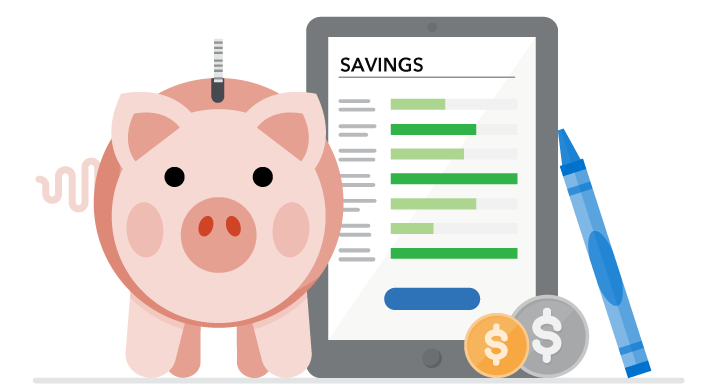
America Saves Week is coming up on Feb. 23. This annual event helps thousands of us start out on a regular program of saving money toward our goals. We’ve all got goals and plans for the future, and a lot of them cost money.
Parents, take the America Saves pledge and get started on saving today.
If you’re a parent or caregiver, setting up savings is also a great opportunity to include your kids. Here’s a quick guide to encourage your kids to start thinking about saving. We’re never too young (or old) to learn!
For kids age 3 to grade 2: Talk about basics and plans
Most young children aren’t ready to talk about bank accounts or compound interest, or think too far into the future. But they can use basic math and understand what it means to plan ahead—both are important building blocks for good financial habits. Try these activities:
- Talk about events that need advance planning, like a special birthday or holiday, trip, or occasion. With your child, make a list to get ready. (It doesn’t even need to be about money—it could be any kind of planning ahead, like what kind of food you’ll make or bring, or what you’ll pack in a suitcase.)
- Ask how much money you could spend now, if you have $10 and you save $1 for later. If your child is ready, offer a way to save in a piggy bank or jar kept in a visible location. After a while, check in to ask how much is in the jar, and talk about what your child plans or imagines for the money.
Kids in this age group are looking to you to understand what’s “normal” in the world of money. This helps them build a good mindset and start to appreciate what your family’s values are. And they can start habits of their own. Try these activities:
- Talk about the advertisements that you see together. Take a picture or cut out ads that stand out for you in some way. If it’s something your child wants, talk about whether it means giving up something else.
- Tell your child a story about having saved money, or missing out on saving, and what you learned from your own experience.
High school students are typically ready for some hands-on lessons about money. From you, they can learn how to go about asking the right money questions and finding reliable answers. And they can experience for themselves, at a small and safe level, how it feels to manage their own funds. Try these activities:
- Ask your kids to help you choose a savings account. Decide together what features you’ll compare, like services, conveniences, and fees. If you want, go ahead and open the account for your teenager! (For kids under 18, you’ll probably have to bring along all your paperwork and put your name on the account.)
- Help your teenager come up with a money habit he or she can stick to—like bringing only a small amount of cash when going out with friends, or mentally calculating how many hours of work it would take to pay for a purchase.

No comments:
Post a Comment